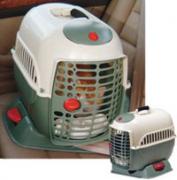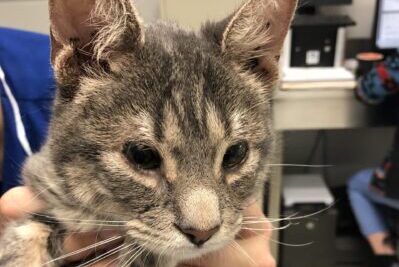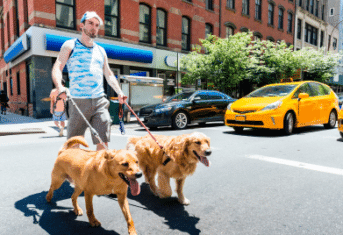Driving with Pets

Driving with Pets
For those of us growing up with a passion for cats and late night TV, the highlight of the weekend was the newest episode of “Toonces, The Driving Cat” on Saturday Night Live. Toonces was just a family pet, who drove the family car. The skit was pure fantasy and very silly. Riding with Toonces was dangerous since every skit ended in a fireball crash.
In reality, driving with the family pet may not be that much different than riding with Toonces. Pet owners frequently drive with their dog or cat and, according to the National Highway Traffic Safety Administration, over 6,000 fatalities occur annually in drivers distracted by their dog or cat, and many more are injured in accidents. No one knows how many pets are killed or injured in the same traffic accidents. Pet owners need to be proactive to protect themselves, their pet and other passengers.
In addition to the pet as a driver distraction, another hazard car traveling pet owners should prepare for is a traffic accident. According to Bark Buckle UP, an organization promoting pet safety and assisting first responders in handling pet emergencies “In an accident, an unrestrained animal is dangerous to the human passengers as well. Even in an accident of only 30 mph, a 60-pound dog can cause an impact of 2,700 pounds, slamming into a car seat, a windshield, or another passenger. Even if the animal survives, it can impede the progress of rescue workers for whom every moment is precious.”
One of the critical pieces of preventing driver distraction and projectile pets is restraint. Successful restraint may take some trial and error. The first car trip my cat and I made was a disaster. Being safety minded, I slipped him in his carrier and put it on the back seat. And the yowling began. Talk about being distracted. Ultimately, he and I came to an agreement. He begrudgingly wore a leash and harness, tethered to a backseat armrest. The ability to move and see outside the car stopped the yowling, but he couldn’t get into the front seat and distract me from driving.
Multiple devices are available to meet the needs of traveling pets and their owners: pet seat belts, booster seats, pet carriers and safety barriers.
Pet Seat Belts
Selection of pet seat belts should be tailored to the individual pet. Size is important. Pet owners should select the proper size for their dog or cat’s weight. The seat belt selected must also be compatible with the car the pet will be riding in. Pet owners should check with their car dealer about pet restraint options available for their make and model.
Pet Safety Barriers
One car specific barrier is the gate which can be installed between the luggage area and the back seat of a station wagon to confine large dogs. These gates often have attachments for tethering devices to prevent the dog from jumping out the instant you open the back hatch. Some of these gates are so holding 2 dogs or 1 dog and some luggage. For dogs that prefer the backseat, a mesh barrier can be used to divide the front seat from the back seat to prevent a pet from jumping onto the lap of the driver. Any of these barriers also serve to prevent a pet from being injured or injuring passengers if an accident occurs.
Pet Booster Seats
Booster seats both restrain the pet and allow the pet to watch the scenery go by. These devices attach either to the headrest or are elevated beds strapped into the car using the existing seatbelt. Choose one with a strap to attach to your pet’s regular harness. I say harness, because if the pet tries to jump out of the seat or there is an accident, they might injure their neck if the restraint strap is attached to a collar. Some of these booster seats are pretty fancy and can be heated using the car’s outlet, or double as a bathtub.
Pet Carriers
A pet carrier is a versatile car travel restraint device. It works in the car, airplane or on public transportation. Most of my feline patients come to see me in a carrier, partly because of convenience and partly because cats feel safer in their own space rather than in their owner’s arms. In the car, carriers should be attached to the seat or floor so they do not become a projectile in an accident or slide off the seat if you make a quick stop. Some carriers attach to a base which is secured with a seatbelt, just like some infant car seats. Other carriers have integral seatbelt straps to fasten the carrier in place.
I hope pet owners find this information helpful and certainly safer than riding with Toonces!
________________________________________________
For nearly a century, The Animal Medical Center has been a national leader in animal health care, known for its expertise, innovation and success in providing routine, specialty and emergency medical care for companion animals. Thanks in part to the enduring generosity of donors, The AMC is also known for its outstanding teaching, research and compassionate community funds. Please help us to continue these efforts. Send your contribution to: The Animal Medical Center, 510 East 62nd Street, New York, NY 10065. For more information, visit www.amcny.org. To make an appointment, please call 212.838.7053.


































